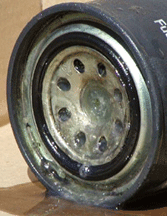Are You Getting What You Pay For?
You can improve the cold weather characteristics of diesel fuel in several ways. You can remove some or even most of the wax. This lowers lubricity, reduces Btu?s (causing lower mpg and engine power output), and raise the refining cost. You can add #1 Diesel, Kerosene, or Jet A to the #2 fuel. This will lower the CFPP and PP by between 5˚F and 10˚F for each 10% of the lighter fuel added to #2 Fuel. You can add an additive commonly referred to as an anti-gel (cold flow improver, wax modifier, or solvent) to the #2 fuel to lower CP, CFPP, and PP. You can also use a combination of two or more of the above to achieve the necessary reduction in gel point.
These various ways of treating have advantages and disadvantages depending on a wide range of variables.
In the Northern States fuel suppliers offer “Winter Blended Diesel Fuels” for use during cold weather. This is a poorly defined term that can mean almost anything. Unfortunately there are a few fuel suppliers that take advantage of these poorly defined terms to the detriment of their customers.
Unless your fuel comes directly from a refinery (most does not), it is made to a “pipeline spec”. The pipeline operators require fuel in their lines to meet certain minimum specs to protect their equipment from cold weather damage. The pipeline CFPP is generally 15˚F lower in the winter than it is during the warm weather months.
In the past distributors had stocks of kerosene and or Jet A in stock and they could easily blend a percentage of this fuel with the #2 as they loaded their trucks. This meant they did not have to stock any additives for cold weather use, additives that might sit in a mild winter or be left over at the end of winter. Kerosene and Jet A was something they could always sell.
The Kerosene or Jet A used to have a cost very close to that of #2 diesel, so there was no disadvantage to distributor. However there has always been a wide range in the selling price of this fuel, anywhere from one to two cents per gallon up to 30 or more cents per gallon.
As winter spec #2ULSD fuel is generally safe to 0?F as it comes from the pipeline in the winter some distributors will claim to be adding kerosene or additives, when in fact they add nothing. If you have ever had a distributor who brings you ?free? kerosene when the weather is scheduled to be unusually cold you should probably be checking to see what is actually being delivered to you in the first place. There is no free fuel.
This year we have some new issues to contend with. The advent of Ultra Low Sulfur Diesel Fuel (S-15) means that the high sulfur Jet A and the Kerosene?s used for home heating can no longer be used for blending with on-road diesel fuels. This means that the refiners and distributors will need to produce and stock an Ultra Low Sulfur #1 Fuel for blending purposes. This new fuel is currently very expensive and available on a very limited basis. There will be shortages of this fuel as we move into the 2006-2007 winter season.
This will force many suppliers to purchase and use cold weather additives.
It is very important that you learn which form of blending your supplier is using. If it ULSD #1, you should ask for documentation that this fuel was actually loaded at the rack. Many customers require that this fuel be delivered in a separate compartment in the delivery vehicle to ensure that they actually are getting what they order.
If the supplier is using an additive, you should ask which additive and obtain the specifications on that product.
In most cases the best way to be sure you are getting what you need and what you pay for is to additize the fuel yourself.
As with all businesses most fuel distributors are honest and strive to provide the best products and services possible. The honest ones will have no problem with you asking questions that protect your interests.
Enertech Labs, Inc. will work with you to ensure that you have fuel that meets your needs and requirements.


